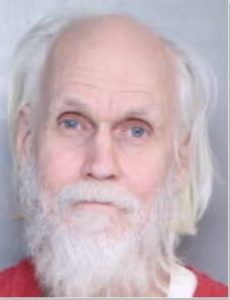Recently charges of murder and attempted murder were held for court following a preliminary hearing before Magisterial District Judge Michael Muth in the case of Commonwealth vs. Randy Halterman. The charges were filed after the shooting of twenty-year-old Adam Schultz and his girlfriend, Chasity Frailey, which occurred in a building off of Route 447 in Stroud Township. The building was inhabited by the defendant. Mr. Schultz was killed while Ms. Frailey, who was also struck by gunfire, survived. The revised criminal complaint and affidavit can be reviewed HERE.
The case has generated much attention on social media focusing on the meaning of self-defense, and more particularly, the castle doctrine. The text of the castle doctrine found at 18 Pa.C.S. Section 505 can be viewed HERE. The castle doctrine in Pennsylvania fits within the law of self-defense. In cases where the doctrine applies the law creates a presumption (a starting point) that a defendant had a reasonable belief that the use of deadly force was immediately necessary to protect himself against death, serious bodily injury, kidnapping, or sexual intercourse compelled by force or threat. The presumption, if it applies, is for the jury to use in deliberating on the guilt of the defendant. In other words, the castle doctrine, like all issues of self-defense, are left for a jury to consider at a trial. Sometimes, whether or not the doctrine applies is disputed by the prosecution.
The castle doctrine itself is loaded with scenarios which, if they exist in a particular case, makes a defendant’s ability to use the doctrine at trial doubtful. For example, the castle doctrine presumption does not apply if the person against whom deadly force was used did not ‘unlawfully and forcefully’ enter the dwelling. The doctrine’s presumption may also not apply if the dwelling was being used to further criminal activity. The decision of whether a jury can consider the castle doctrine is decided by the trial judge usually after the evidence is all presented and before a jury begins to deliberate. The way this works has been explained in the recent case of Commonwealth v. Cannavo 139 A.2d 1282 (Pa. Super. 2018) which can be viewed HERE. As explained by the court: “…the castle doctrine is an evidentiary means by which a defendant may attempt to prove justification by self-defense…a valid claim must be made out as a matter of law, and this determination must be made by the trial judge.” Cannavo at page 1287.
The issues presented in the Halterman case, like those of all others involving claims of justification by self-defense, will be decided at trial. It is important to remember that all criminal defendants, including Mr. Halterman, are presumed innocent unless and until the Commonwealth has proven the offenses charged beyond a reasonable doubt.
The preliminary hearing before Judge Muth in this matter was conducted virtually and took over four hours. The hearing involved the testimony of Detectives Robert Transue, Emily Raymond, and Wendy Serfass. Also, Ms. Frailey was called by and questioned by Mr. Halterman’s attorneys. The court also viewed numerous photographs of the scene, the prior testimony of Ms. Frailey, and a short recorded interview of Ms. Frailey by Detectives Miller and Knowles taken the night of the shooting while Ms. Frailey was hospitalized. You can listen to the interview of Frailey HERE. You can also view some photos of the scene below.
• Image 1
• Image 2
• Image 3
• Image 4
Self-defense, whether viewed with or separate from the castle doctrine, has at its core the emotion of fear. It is fear, in particular a fear of imminent death or serious bodily injury, which must be the driving emotion behind the use of deadly force. If the decision to kill is based on some other emotion, like anger, hatred, rage, or jealousy, and not fear of imminent death or serious injury, then a claim of self-defense should be rejected. According to the evidence presented the couple entered the unlocked building believing it to be abandoned and after announcing their presence. They walked through the debris strewn interior for about a half hour. After they discovered a small stairway and ascended to a catwalk they made their way to an open door. At that time it is alleged the defendant shot at them from behind a dark curtain. Wounded they made it to the bottom of the steps. While on his knees with his hands up, Adam Schultz pleaded for his life and that of his girlfriend. He explained to the shooter, who remained on the catwalk but was shining a light down on him, that they didn’t realize anyone was there and intended no harm. Despite his pleas Adam was shot several more times, bullets striking his chest and head. While he lay dying, Chasity hid partially under his body with her hand drawn over her mouth so the shooter wouldn’t hear her.
During the hearing Detective Raymond testified that the defendant admitted to shooting the couple. He was asked what his motivation was for shooting them without warning from behind the curtain. He explained he was in fear and didn’t know if they were armed. The defendant was asked what his motivation, his mindset was for shooting Adam the second time while he was at the bottom of the steps. The defendant told Raymond that his mindset was wanting ‘closure’, of not trusting the system, and because he couldn’t let them get away. Following the hearing Judge Muth explained that he found enough evidence to send the case to court for trial. He noted that Ms. Frailey was very consistent in what she told the police and the court. He also felt that even if the castle doctrine applied that the Commonwealth overcame its presumption. The Judge added that the defendant’s mindset of seeking closure was not evidence of self-defense but of murder.
This case is being prosecuted by First Assistant District Attorney Michael Mancuso and his co-counsel, Assistant District Attorney Richard White.
~ written by Michael Mancuso, First Assistant District Attorney



